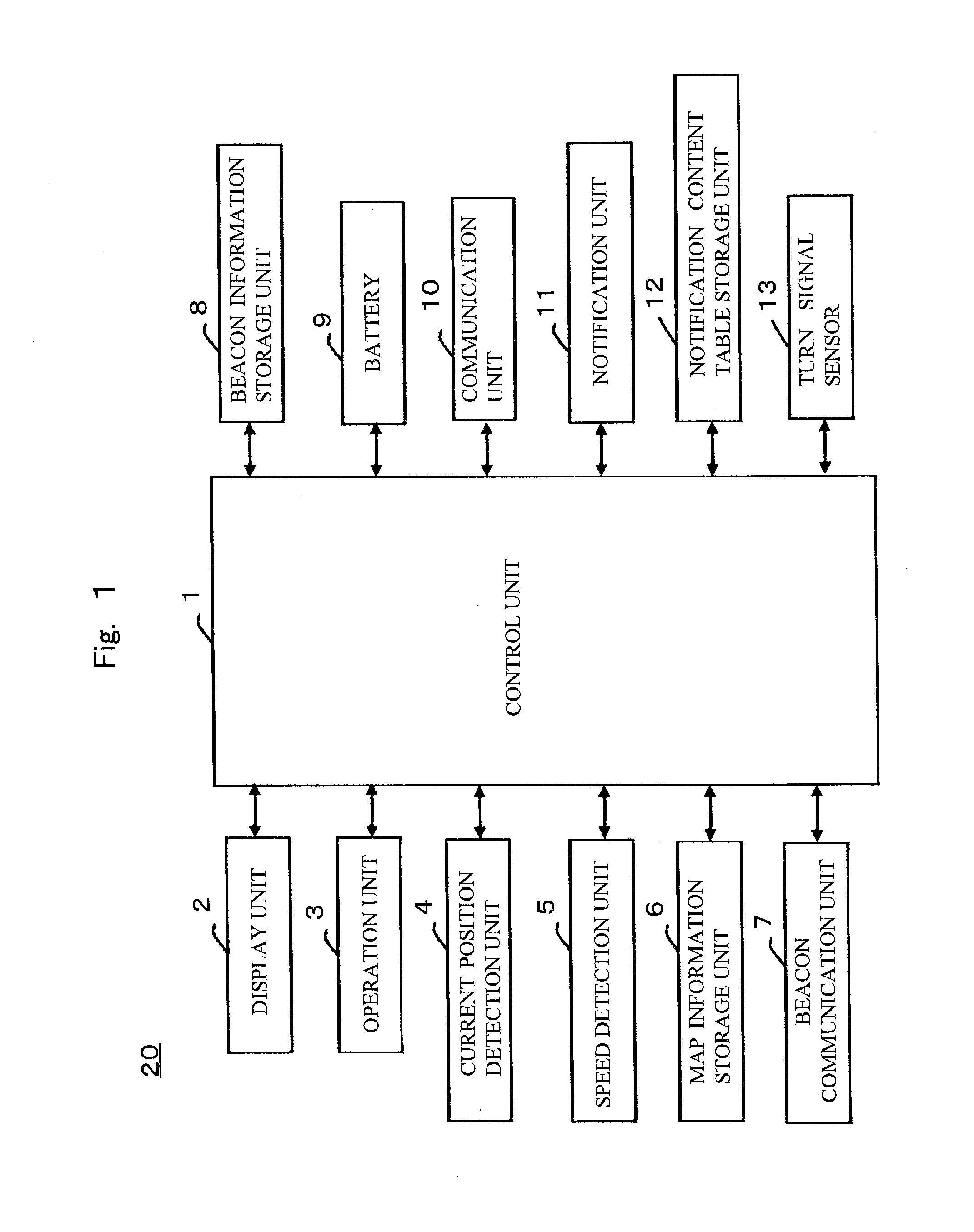Mobile body communication device and travel assistance method
a technology of communication device and travel support, which is applied in the direction of signalling/lighting device, vehicle components, instruments, etc., can solve the problem of high risk of collision with the vehicle c traveling straight through the blind area, and achieve the effect of preventing an excessive suppor
- Summary
- Abstract
- Description
- Claims
- Application Information
AI Technical Summary
Benefits of technology
Problems solved by technology
Method used
Image
Examples
first embodiment
[0058]The navigation device 20 according to a first embodiment of the present invention is described referring to FIG. 2. FIG. 2 is a first flowchart illustrating the flow of processing that the control unit 1 of the navigation device 20 of the present invention performs.
[0059]In Step S01, the control unit 1 acquires information including intersection information, traffic signal information, and sensor information via the beacon communication unit 7 and the communication unit 10.
[0060]The timings at which the control unit 1 acquires the intersection information, the traffic signal information, and the sensor information are not limited to those timings. Those pieces of information may be acquired regularly or irregularly (e.g., based on the transmission timing of another communication device). In case of acquiring the information a plurality of times regularly or irregularly, latest information among the acquired information may be used. The processes of individual steps to be descr...
second embodiment
[0079]The navigation device 20 according to a second embodiment of the present invention is described referring to FIG. 4. FIG. 4 is a second flowchart illustrating the flow of processing that the control unit 1 of the navigation device 20 of the present invention performs. Steps S11 to S16 and S18 to S21 in this embodiment are the same as Steps S01 to S06 and S07 to S10 in the first embodiment, respectively, and hence descriptions thereof are omitted.
[0080]In Step S17, the control unit 1 determines whether or not a vehicle at a risk of collision can stop. In the first embodiment described above, when the signal indication for the local vehicle is the red signal indication with the right-turn arrow, the signal indication for the vehicle at a risk of collision is the red signal, and hence the process proceeds to Step S07 in the first embodiment (Step S18 in this embodiment) where the control unit 1 determines the notification mode based on the signal indication for the local vehicle ...
PUM
 Login to View More
Login to View More Abstract
Description
Claims
Application Information
 Login to View More
Login to View More - R&D
- Intellectual Property
- Life Sciences
- Materials
- Tech Scout
- Unparalleled Data Quality
- Higher Quality Content
- 60% Fewer Hallucinations
Browse by: Latest US Patents, China's latest patents, Technical Efficacy Thesaurus, Application Domain, Technology Topic, Popular Technical Reports.
© 2025 PatSnap. All rights reserved.Legal|Privacy policy|Modern Slavery Act Transparency Statement|Sitemap|About US| Contact US: help@patsnap.com



